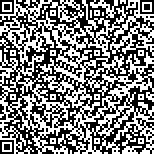下载中心
优秀审稿专家
优秀论文
相关链接
首页 > , Vol. , Issue () : -
摘要

崎岖地形会导致光学遥感影像产生畸变,进而影响山区土地覆盖分类和生物理化参数反演精度。因此,地形校正是山区遥感应用的先决条件。从20世纪80年代以来,国内外学者致力于研究如何准确获取山区地表遥感反射率,建立了多种地形校正方法来缓解遥感影像中的地形效应。尽管已有研究对地形校正方法进行了比较,但大多数仅限于特定影像和少数评估标准,导致结论不够充分和一致。目前缺乏对地形校正相关研究进行系统梳理,这限制了对当前研究现状的全面认知。本文首先从地形影响光学遥感成像过程的关键途径着手,系统阐述了地形效应产生的机制;其次介绍了常用地形校正方法的基本原理;然后基于Web of Science (WoS)/Scopus和中国知网(China National Knowledge Infrastructure, CNKI)的文献数据,检索了1980年到2022年与光学遥感地形校正相关的文献,提取每篇文献中的各类信息并借助Meta分析方法进行了发文量、关键词和地形校正研究各环节(卫星影像、数字高程模型、地形校正方法及评价标准)等特征分析;最后对地形校正的关键科学问题进行讨论并展望了地形校正未来的主要发展方向。本文研究结果定量展示了光学遥感地形校正的发展历程和研究热点,为今后地形校正方法的优化提供了参考。
Rugged terrain distorts optical remote sensing observations, and subsequently impacts land-cover classification and biophysical and biochemical parameters retrieval over mountainous areas. Therefore, topographic correction is a prerequisite for many remote sensing applications. Since the 1980s, domestic and foreign scholars have begun to study the accurate acquisition of remote sensing reflectance on mountainous areas, and have established various topographic correction methods to mitigate the topographic effects on remote sensing images. Although comparative studies on topographic correction methods exist, most are limited to specific images and a few evaluation criteria, resulting in conclusions that are often insufficient and inconsistent. Currently, there is a lack of systematic reviews on topographic correction research, which limits a comprehensive understanding of the current research status. This review first systematically expounded the mechanism of topographic effects generated from the two key pathways that terrain affects optical remote sensing imaging processes. Then, the principles of commonly used topographic correction methods were described. Based on literatures from Web of Science (WoS)/Scopus and China National Knowledge Infrastructure (CNKI) between 1980-01 to 2022-08 related to topographic correction for optical remote sensing, we extracted various information from each literature and analyzed the volume of publications, characteristics analysis of different parts (satellite sensors, digital elevation model, topographic correction methods and evaluation criteria) of correction, and performance analysis of topographic correction methods using the Meta-analysis method. Finally, the key scientific issues of topographic correction are discussed, and the future main development directions are predicted. The quantitative results of this study demonstrate the development process and research hotspots of topographic correction for optical remote sensing, providing a reference for the selection and exploration of valuable new research directions for topographic correction methods in mountainous areas in the future.

